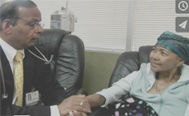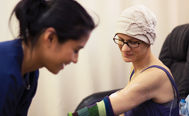- Lesion – A wound, injury, or abnormal change in the body tissue such as a sore, rash, boil, or tumor.
- Liver function tests – Tests that are performed to monitor the functioning of the liver. Levels of specific compounds that can be measured in the blood can help determine if a patient has a liver disorder and monitor side effects from treatment to the liver. Combinations of specific compounds (AST, ALT, albumin, etc.) are typically measured together to help provide a clearer indication of the disorder.
- Living will – A living will is a legal document that describes a person’s wishes or intentions regarding his or her medical care under certain conditions.
- Lumbar puncture – Removal of a sample of the fluid that surrounds the spinal cord. Doctors numb the lower back area so patients do not feel pain. A thin needle attached to a syringe is inserted into the lower back. The fluid is removed and examined for cancer cells or for infection. Generally you will experience some pressure at the needle insertion site. It is best if you relax and lie still throughout the procedure and for a while afterward. To avoid a severe headache, you may be asked to lie flat on the exam table for a period of time following this procedure.
- Lymph nodes – Lymph nodes are small, oval glands found throughout the body. They act as filters and fight infection. Cancer cells often spread to other parts of the body through the lymphatic system.
- Lymphedema – A condition in which excess lymphatic fluid collects in tissues, causing swelling, numbing, pain, or a limited range of motion in extremities. This often occurs when many lymph nodes are removed for the treatment or staging of cancer, or lymph nodes are treated with radiation therapy. Lymphedema most often occurs in the arms if lymph nodes under the arm are removed or radiated, or in the legs if lymph nodes in the groin are removed or radiated.

Blog


